ChuToroZuke的清酒誌 第1卷
大家好,我是 ChuToroZuke!在《ChuToroZuke 的清酒誌》第 1 卷,我想從比較概括的角度探討清酒,說一說清酒究竟是什麼,以及我們應該多多品嘗的理由!
關於日本清酒
日本清酒是日本代表性的酒精飲料,毋庸置疑。清酒歷史悠久,是日本飲食文化不可或缺的一部分,而且可以入菜,有許多料理會用上。
清酒在任何場合都值得暢飲、讚頌、品賞一番,搭配得宜的話,可以大大提升任何一餐的體驗。
清酒也是最適合搭配各種日式料理的飲料之一。只要是能搭配葡萄酒或香檳的餐點,清酒都可以發揮相同的效果,有時甚至更適合!
不過很遺憾,過去 10 年裡,清酒的消費量下降很多。這是因為年輕世代對清酒失去興趣,只喝啤酒或高球雞尾酒(在燒酎或威士忌中加入冰塊、水、汽水、水果味),加上大家消費能力提高、選擇增加,愈來愈傾向喝葡萄酒和香檳,甚至吃傳統日本菜的時候也當作佐餐酒。
因此,釀造廠必須改變思考、生產和行銷清酒的方式,還必須與葡萄酒、香檳……等酒精飲料競爭,才能奪回市場,並提高海外的市占率(例如亞洲 / 東南亞、台灣、中國、香港、美國、歐洲 / 英國 / 法國)。
話雖如此,你在日本還是可以找到各種現代或傳統調性 / 風格的清酒,出了日本也是。
我認為我們這些造訪日本的遊客應該幫幫清酒產業,把握任何機會探索清酒的奧妙。清酒原本就好喝,搭配食物更是美味,而且瓶裝清酒是絕佳的紀念品和送禮選擇!
清酒用什麼釀的?
總地來說,清酒的配方如下。
1) 釀酒水 - 日本各個都道府縣水質不同,礦物質含量和硬度也不同。純淨度和水源很重要。
2) 釀酒米 - 釀酒用的稻米品種很多,有一些是日本各地具有地方特色的釀酒米(酒造好適米),各有各的獨特風味,每一種風味中還可以有不同層次與質地的組合。一般來說,米粒的中心(心白)含有所有精華澱粉,碾米的時候把米心以外的部分去得愈乾淨,通常清酒質地就愈順口,而且會產生更多果味(價錢通常也比較高)。你在清酒瓶上看到的「精米步合」四個字,代表的是碾米的比例,如果比例是 80%,就表示一粒米去掉了 20% (以米粒的總重量計算)。以「獺祭二割三分」為例,這支清酒的精米比例是 23%,表示一粒米去掉了 77% 不用。
3) 麴菌(拉丁學名是 Aspergillus)。除了製作清酒之外,麴菌還可以用來製作味噌、醋、醬油和燒酎。
4) 酵母 - 是轉化的過程中不可或缺的一部分。酵母會消耗糖,產生酒精和二氧化碳。稻米中並沒有酵母可以消耗的糖,必須先用上面提到的麴菌將米粒中的澱粉糖化,再用酵母去消耗糖。
清酒不是葡萄酒,但是由於製酒米經過發酵,所以種類偏向釀造酒。
關於清酒的命名和定義
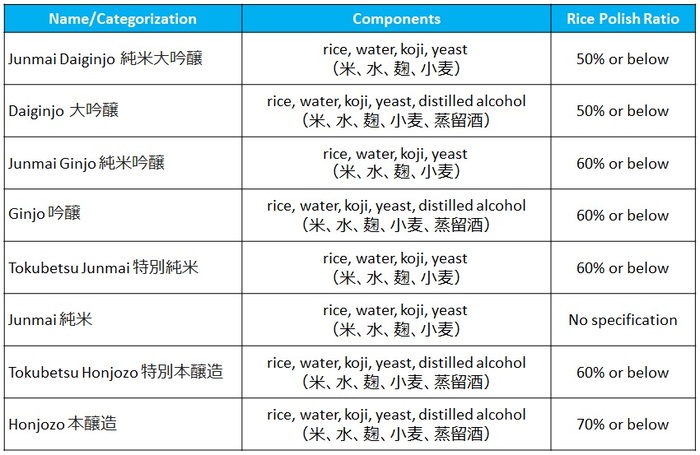
關於清酒的命名和定義
如果你偶然遇上清酒,可能會發現有純米、吟釀、純米吟釀、大吟釀、純米大吟釀這些名稱。
純米級清酒 - 意思是純粹用精米(以及水、麴菌、酵母)釀造
吟釀級清酒 - 用釀酒精米、麴菌、酵母、釀造水釀造,並加入經過蒸餾的釀造酒精,以產生(並誘發)特殊的香氣和調性。
不過這些詞彙和術語有時候會混用:
其他實用術語
有時你會在酒標上看到其他規格說明,包括甘辛度、酸度和酒精濃度,以這些資訊為根據,你會比較清楚知道一支清酒的調性。
日本酒度 (SMV) – 如果級數為 0 級,就代表這支清酒是中性,不甜也不乾。不過也有些人說現在級數 3 才算中性。
一般來說,從中性點開始,數字愈高愈乾,0 以下則是比較甜。甜味指的是殘餘的糖分和清酒本身的酒精甜味。
有些清酒聞起來有果味,芳香濃郁,舌尖嘗得到一絲甘甜,但是入喉之後卻乾而不甜,SMV 級數比較高。
酸度 - 大多數清酒的酸度在 1.3 至 1.5 之間。傳統手工釀造法造出來的酒通常酸度比較高,可以達到 1.6 以上。
低溫長時間發酵和儲存也可以把酸度提高一點點,酒體會變得更加飽滿,酒質更均衡,更適合佐餐,頗接近一些紅葡萄酒的調性。
酒精濃度 - 清酒的酒精含量會在 12% 至 14% 之間,甚至 16% 以上。如果是原酒(釀造過程中不額外加水),會比較濃縮,通常酒精含量比較高;如果是夏季出廠的清酒和比較現代風格的清酒,酒精濃度往往比較低,更容易入口,通常也比較受歡迎。
品味清酒的要領,以及必須問自己的問題
好的,現在你有機會喝喝看你好奇的杯中物了!該怎麼喝才對?
以下是單喝和佐餐時需要思考和探索的重點:
入鼻的香氣 - 拿到一杯清酒,你要做的第一件事就是好好聞它的香氣。你聞到了什麼?
可能有一點發酵味,一點泥土味(草味、米味),一點果香(蘋果香、梨香、甜瓜香、荔枝香、香蕉香),或別的什麼味道,讓你想起其他食物或其他熟悉的香氣。我曾經聞過一支清酒,讓我想起午餐肉!答案沒有對或不對,什麼樣的聯想都好,你可能會想到曾經嘗過的食物!
質地 - 清酒的口感如何?是滑順、豐富、圓潤、溫醇、醇厚,或是有一種「咬口」或刺激的感覺?試試看先把舌頭轉一轉,稍微提高酒液的溫度,再吞下喉嚨。現在嘗起來怎麼樣?
舌上的香氣 - 從觸及舌尖,到中段(可以稱為中味),一直到最後,清酒滋味如何?有沒有感覺到任何差異?是不是因為經過的時間和吃下的食物而有所不同?
餘味 - 清酒入喉,是什麼樣的感覺或味道?有餘韻駐留,或是像喝水一樣快快結束?你感覺到舌頭上還包裹著一些酒液嗎?有沒有酒精的燒灼感,讓你覺得討厭或者喜歡?
溫度 - 現在再重新來過,嘗嘗看不同溫度的清酒:很冰(攝氏 5 度),有點冰(攝氏 10 至 15度),室溫(攝氏 15 至 25 度),然後再重複一次。你最喜歡哪一點或哪一個瞬間?
希望我的第一篇文章能幫得上忙!歡迎留言或提問 :-)
作者:ChuToroZuke
ChuToroZuke 熱愛日本料理和日本文化,至今記得 6 歲年幼時的壽喜燒初體驗,尤其是壽喜燒牛肉沾生雞蛋,配一碗日本米飯吃下肚,這樣神奇的組合讓他印象深刻。時間經過許多年,4 年前的一個晚上,已經成年的他在最愛的餐廳體驗到清酒配完美下酒菜和壽司的組合,大受感動,難以忘懷,因而引爆熱情,從此走上了清酒宅之路,著迷於發現清酒,以及重新發現食物與清酒的搭配。突然之間,去東京找各種餐廳(不分高低檔)嘗鮮這件事,在這幾年變得更刺激有趣了,清酒宅因此可以好好鑽研這種酒飲,還可以和同好一起享受美酒(當然還有佳餚)。
受邀為 TokyoTableTrip 寫文是一大樂趣與榮幸,他可以藉此回饋品酒圈,協助將清酒的資訊和對清酒的喜愛散播出去,以及在海外為日本國內的清酒推廣盡一份力。
Register account first.
Register

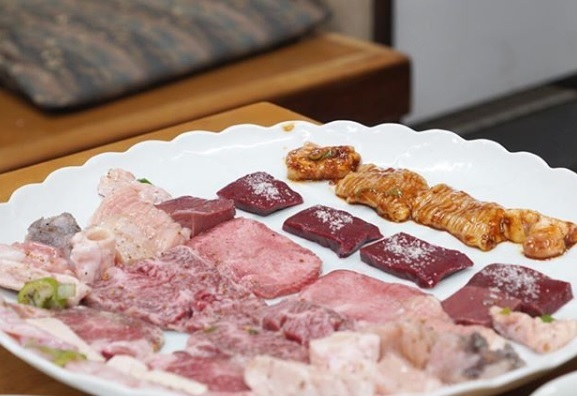
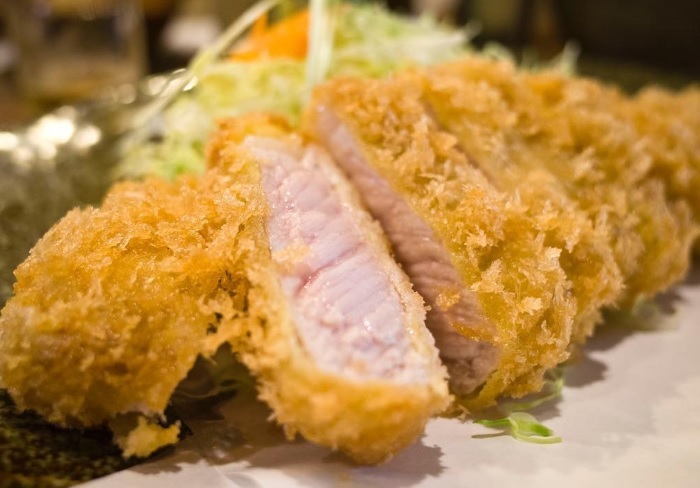
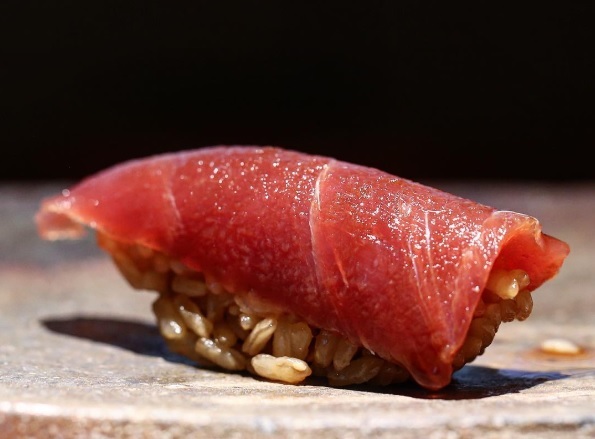
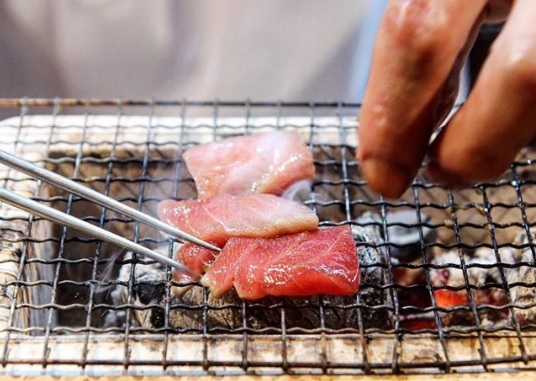





Comments 11
11
ChuToroZuke
I think with Uchida you need to go with seasoned locals. I was not aware Shinof customizations, although if you just stick with the more well known skewers you are already good with sampling. Even their shochu drinks look rather hardcore.
You can check out shinkame.co.jp and their authorized retail shop shinkame.jp (I believe outside the brewery) to see their crazy lineup. I think just start with a Shinkame Junmai and perhaps the Shinkame Hikomago Junmai and see how you like it...try both room temperature and heated to 50 C and if the shop is willing, past 50 C. Then explore the Hikomago Junmai Ginjo varietals, then the Hikomago Junmai Daiginjo
The maderia colored sake or true koshu you speak of, are aged differently under different conditions. If you go to Ginza Matsuya basement, they might have verticals of Daruma Masamune koshu spanning the last 30 years or so, and you'll see the gradation of the color shades for each vintage, as well as their higher prices. If you want to experience food pairing with koshu in a koshu specific bar/eatery, highly recommend a visit to Shu Sa Ron in Shinagawa, very close to the station. The cuisine is more western approach, although the servers will be more than glad to recommend. Koshu and braised Japanese beef cheeks with cabbage is quite fantastic with koshu. They will also give you the right glass to enjoy the various koshu with. It can get a bit overwhelming as koshu can sometimes have very high acidity.
I don't speak for OL's but my feeling is that they like to go to drinking establishments that cater more to females, and perhaps have food that is a bit lighter, less greasy, great service, yet fun but not salary man necktie around forehead boisterous. Basically ladies version of male bonding kind of joints but less subdued. But it is also a culture of going to multiple drink places. Maybe a few go in groups of both male and female...but the fun is later in the evening when you see them walking (and you can tell they are super tippsy as they can't walk in a straight line) and you'll know they are completely gone when coworkers have to help them into a taxi....
Kirakutei's owners are also good friends with the master brewer of Jikon (as well as a few of the other breweries) and they have a special relationship with the shop in Tokyo that provides it to them....the likelihood of general public going to the shop and find Jikon to purchase retail is next to zero.
ChuToroZuke
I no longer have the URLs but if you type in the Japanese name of Uchida and then the Japanese characters for strategy and then motsuyaki into google search you will find maybe a few blogs that really detail the rules. I had them bookmarked on my phone ready to check them out, but was a bit worried about falling ill with food poisoning (you never know with these things) before a trip to Hyogo prefecture.
Shinkame is probably one of the most otaku level sake out there, but if you ever get the chance try their second label Hikomago (grandchild), aged an additional year (2 for Shinkame vs 3 for Hikomago) and the resulting smoothness and complexity is ridiculously good. Some of these really dedicated traditional old school non celebrity breweries make sake that are so good that I think some of their top of the line offerings could give celebrity sake a run for their money and even pair better with food (and also at a fraction of the cost). I'm dying to try Shinkame Junmai Daiginjo and some of their crazy 10+ year aged koshu lineup, but those you will have to trek to Saitama prefecture to get it.
I think your chances of hitting a pretty decent izakaya or drinking hole in Shinbashi are far better than if you were to go to places like Ebisu Yokocho which is more for youngsters grabbing quick bites and moving on. As my friend used to say, if in Shinbashi just follow the salarymen, unless you want to scout out the OL's for eye candy haha but the venues they go to may be a bit different in vibe.
Kirakutei is excellent. Subjective but if you liked Kurosaki you will enjoy Kirakutei (the owners are very good friends with each other). It's an upscale kappo izakaya, super chill vibe. Chef's English is very limited although okami san speaks a little more (she's awesome too). Their sake is a bit lighter bodied but there are some very fun surprises, and some cult sake as well. Some don't like the place because for the same money you could eat a mid tier kaiseki restaurant, but others love this more casual relaxing format.
There are other neighborhoods much further out that are a lot of fun. Sangenjaya in Setagaya ward is completely unexplored territory for a lot of great local fun, but it's not for those who are uncomfortable wandering into a place where servers don't speak English and no English menu at all.
ChuToroZuke
@Guest/Menchikatsu
Not entirely...while there are some unicorn and harder to find sake, some of them (like Tatsuriki) are relatively easier to find. The idea is that if you come across any of the 16 at a restaurant (not Tatsuriki though), order a glass and give it a try. Especially true if it is a unicorn sake and you're willing to splurge 3000+ yen on a glass of Juyondai, and is probably a unique bottling you cannot get anywhere else.
Also no restaurant will carry all of the 16. The big problem is that there are so many sake out there and no shop tends to carry a brewery's complete portfolio (just like in the wine world). There are some breweries in the suburbs where the everyday kind of sake (honjozo, futsushu) are not sent out to Tokyo shops...in a way they are very local sake but absolutely spendid and dirt dirt cheap, like less than 1800 yen for a 720 mL bottle if a honjozo that's only available in the area where the brewery is, or a one cup sake version of it. Then some sake breweries do limited production of certain bottles because they want to play around with a different sake rice, or a different recipe altogether....then another variation, and sometimes it isn't archived and you don't see pictures of it on the internet. Think of it like table wine. Some are just absolutely splendid and pair spectacularly with local food. Hence "what grows together goes together" holds true especially in rural Japan. Although the term "terroir" is a bit debatable with wine folks in the sake world...but the concept is there.
Zaku has maybe three bottles through Mutual Trading (you mentioned New York) but they are the lower end. I have not tried them yet.
Ichita is where I tasted Denshu Junmai Daiginjo 45. Tabelog listings have beverage pictures uploaded by users, and you can always inquire about the availability of a bottle with the restaurant. Otherwise if you just ask them for sake they will pour at random. Ichita has Juyondai as well, but I find that Juyondai has a very limited and specific pairing range.... pretty much appetizer/apertif level, and if there are sweet and sour components (like a sunomono) with some texture or crunch from say, something like tobiko. Otherwise it's a waste at most sushi restaurants and quite a few izakaya. I've had the 2nd or 3rd from the top of the line (Shichitare Nijyukan) from a 1.8L bottle at Namba Hibiya, and I have to give them credit for using a Burgundy glass which allowed the sake to breathe quicker. Fantastic sipper/apertif, and perhaps it's like having a Domaine Leflaive Grand Cru with a lot of age (or Coche Dury)....but I think the money or black market pricing on Juyondai is better spent on a white Burgundy cellar selection. All Juyondai are nama or single pasteurized, but many wine collectors don't realize this and just keep it at cellar temperature. At the same time the sourcing/handling is unknown on the black market so they could be experiencing a much lower percentage of what it has been originally.
Cult sake is great, but many cult sake have limited pairings. Kind of like in the wine world to an extent. Junmai and Junmai Ginjo are fuller bodied and have a much wider pairing range than Junmai Ginjo, but if one knows what they are doing, they could pair Junmai Daiginjo with the right food, but it has to be more exacting. Or the sake has to be built in a certain way that works beyond sashimi and light clean fare.
Nothing wrong with Junmai Ginjo also, some are polished to Daiginjo levels but are still humbly called Junmai Ginjo (to keep the price down). Some JG are a bit pricier than they should be, but they're kind of like the in between....smooth enough to sip but structurally sound enough to pair with food. Think of Junmai Ginjo and Junmai Daiginjo akin to Premier Cru vs Grand Cru.
There are some Tokyo restaurants that allow corkage, most of the time not advertised, but if you politely ask they will inform you. I know L'Effervescence allows it (forgot the fee but much lower than New York) and I did it back in February (and also got an almost full sake pairing). Other restaurants won't allow corkage until you become a regular (and you also pour the master some out of courtesy). which makes sense...especially when you go the first time and you don't know what the profile of the food is like. You can also ask concierge to ask for you when you book restaurants as well. Or you bring a bottle as a gift to a friend who owns a restaurant and maybe they'll feel like drinking and sharing...but that's rare.
It is actually very sad that a lot of higher end restaurants (Japanese and non Japanese) don't take food pairing and sake into consideration. But then again traditionally, pairing with food is never thought about like wine, and some frown on that. It is the sake bars run by sake geeks that are pushing this and some of them actually do love wine as well, but they take a more specific attack and do a bang up great job with it.
Glad to have you as a reader... I was a bit worried at the lack of audience and interest in my chronicles LOL.
guest
I see, so you wrote up that vol. 3 to highlight the most well known difficult to find bottles. Excellent, right down my alley. As you might know, in the beer world, a rare and super limited bottle is called a 'white whale'. Which is exactly what gets me interested in trying. They just get snagged so quickly though.
Actually, I sought out Zaku, because it took first place at a recent sake competition, in the junmai ginjo category, ahead of two other bottles of Toyobijin. I will definitely do my rounds, and find that red bottle you mention. Do you another place I've found surprising success? The liquor section at Meidi-ya, when no other store has something, I've found stuff here, right in the front shelf.
You have a real palate for pairing sake with food, much like wine. It's really interesting to hear. Not many people understand beverage pairings. But I like where it's going. The juice pairing at Florilege really intrigued me. As far as sake goes, I usually get the chance to try new ones at sushi restaurants, picking from whatever they offer the customers throughout the course. I've also come across some interesting things that I wish I took pictures of, at restaurants like Ichita.
I took screenshots of those sakes for reference.
I too like scouring the basement floors of departments. Isetan and Ikebukuro Tobu/Seibu are some of my regular routes. But as you know, for someone not experience in sake, the selection is as daunting for a newbie as browsing wine store. Another bottle I found here, and I almost pulled the trigger on was a special release: Senkin Kamosu. Except that my luggage was way too heavy already.
On the topic of corkage, I wondered this, but didn't know how I would go about doing corkage at a Japanese restaurant. Is the corkage fee high? I would love to bring some stuff over from America, that people in Tokyo can't get.
Thank you for giving me more hope! Haha. I've been able to locate Juyondai in the past, but that was like a needle in a haystack. And as one can imagine, when you find a bottle so early in the day, it's not easy to haul it around as you walk from place to place. I am definitely on the hunt for a nice bottle of Denshu on my next visit.
Sounds like Nabeshima is a bit more rare eh? I thought it'd be the opposite way around. But I get them mixed up sometimes. Hibiya Midtown is the place to be now it seems... in terms of upping your business prices. Ryugin, Sushi Namba... even a branch of Buvette. Which by the way, is amazing, if you ever visit New York City.
I would love to bring back many bottles! But the sheer weight is a lot to carry, haha. You are absolutely right. I've gone under the impression, and people tell me, that junmais have more taste, because not as much of the rice if polished off, and you lose it. I feel that these days, too much glory is placed on the idea of junmai ginjo, that uneducated new sake drinkers get the wrong idea. And they think, "so... only drink junmai daignjo, it's the best, why drink anything else?" So they fall for it, when a company like Dassai mass produces, rushes, and makes sloppy milled batches of rice, but meet the criteria to name it a junmai daiginjo, when smaller craft sake makers are doing better junmai. Not knowing that they're missing out on so much from other types of sake. I compare this to the idea of Starbucks Reserve beans, which can't compare to superior (cheaper) small batch roasters. I especially find savory and aged sakes exciting.
And thank you for the tip on the nama sake. I usually just have the hotel hold any bottle I get, and hope for the best during the commute. I once grabbed an unpasteurized bottle from Nara. Seemed ok when I tried it. I didn't get sick :D
Please do another article sometime. I am about to read your one on the proper way of ordering. I also wish the site would have more articles on other topics too, like a full magazine.
Menchikatsu
Just a brief follow up, on something we talked about before. Tonight, I brought a bottle of Shinkame Hikomago junmai to an upscale izakaya, and had it corkaged. The boss brought up, that he used to have a kandouko sake warmer 燗銅壺, but not anymore, so they heated it up in a hot water pot for me. It drops in temperature very quickly using this method! The bottle recommends it at 55-60 degrees celsius, which I liked it most at... though I burnt my tongue. 45 degrees it's still good, but the taste is definitely different. I brought my own thermometer, which got a laugh out of the staff. Drank it with a variety of shellfish (local abalone, oysters), sashimi (tako, fatty fish), and various types of snacks. People seated next to me were from Kyushu, and are regulars at wagyu restaurants in Tokyo, like Yoroniku and Jambo Hanare. I shared some sake with them. They were drinking satsuma shochu. They tell me, apparently Fukuoka is more shochu territory.
Read more